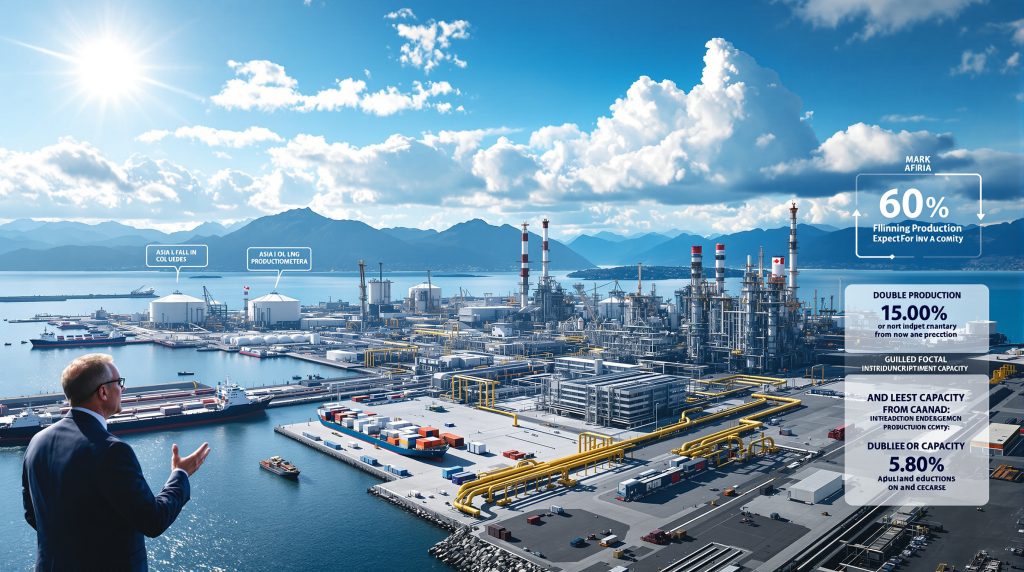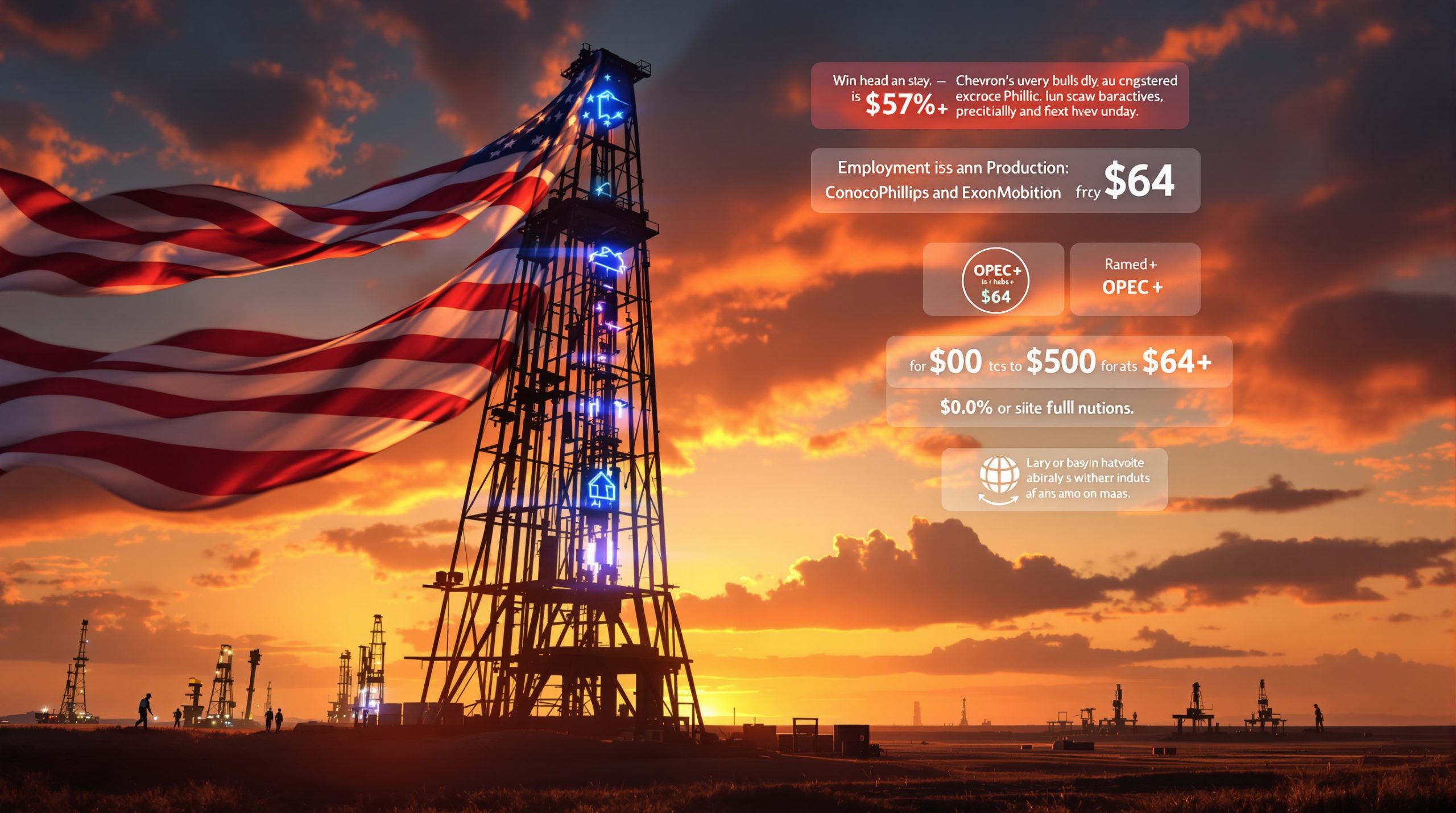Canada's LNG Expansion Strategy: Accelerating Energy Infrastructure for Global Markets
Canada is implementing a strategic approach to expedite major energy projects, with liquefied natural gas expansion in Canada becoming a cornerstone of the country's economic diversification strategy. Recently, the government announced a significant initiative to streamline approvals for five major infrastructure projects, highlighting the urgency to strengthen Canada's position in global energy markets.
The New Fast-Track Approval Framework
The government has established a dedicated major projects office specifically designed to reduce regulatory barriers that have historically delayed critical infrastructure development. This initiative aims to streamline environmental assessment processes while maintaining necessary standards for responsible development.
"We used to build big things in this country, and we used to build them quickly. It's time to get back at it, and get on with it," said a senior government official during a recent announcement on infrastructure development, reflecting growing frustration with complex processes that have historically delayed major projects.
The new framework represents a significant shift in Canada's approach to infrastructure development, targeting approval timeline reductions from the current decade-plus process to a more internationally competitive timeframe. This strategic pivot comes as Canada seeks to strengthen its economic resilience by diversifying beyond traditional trade relationships.
Strategic Economic Importance of LNG Expansion
The LNG Canada facility in Kitimat, British Columbia, represents Canada's flagship entry into the global LNG market implications. Led by Shell with partners including Petronas, PetroChina, Mitsubishi Corporation, and Kogas, the facility recently began shipping LNG to international customers after receiving a 40-year export license from Canadian regulators.
The proposed expansion aims to double the facility's production capacity, currently at approximately 14 million tonnes per annum. This expansion would require substantial new capital investment beyond the estimated CAD $40 billion already committed to Phase 1 of the project.
This expansion aligns with Canada's broader economic strategy to:
- Diversify export markets beyond the United States
- Capitalize on growing global demand for cleaner transition fuels
- Generate long-term economic benefits through infrastructure development
- Create sustainable employment opportunities in Western Canada
Industry analysts note that gaining access to premium Asian markets could significantly improve realized prices for Canadian natural gas producers, who have historically been constrained by North American pricing.
How Does LNG Fit Into Canada's Energy Export Strategy?
Canada's push to expand LNG capacity reflects a strategic pivot in its energy export portfolio, responding to both domestic economic needs and changing global energy dynamics.
Reducing Dependence on U.S. Markets
Current geopolitical tensions and trade policy uncertainties have accelerated Canada's desire to diversify its export markets. With approximately 98% of Canadian natural gas exports currently flowing to the United States, LNG development opens access to premium Asian and European markets where price points can be substantially higher.
LNG exports provide a critical alternative revenue stream for Canadian natural gas producers who have faced pricing challenges in the North American market. By accessing global markets, these producers can potentially capture price premiums that reflect true supply-demand fundamentals rather than regional pipeline constraints.
The strategic value of market diversification extends beyond simple economics—it provides greater energy security for Canada's resource sector by reducing vulnerability to policy shifts in a single export market.
Global Market Positioning
The global LNG market is projected to reach approximately $15.6 trillion by 2026, with the Asia-Pacific region representing the largest import market. Countries including Japan, South Korea, China, and India continue to drive demand growth as they transition away from higher-carbon energy sources.
Canada's abundant natural gas reserves position it well to become a significant LNG supplier, with several competitive advantages:
- Political stability and regulatory predictability compared to many competing suppliers
- Proximity to Asian markets with shorter shipping routes from the West Coast
- Cold climate conditions that improve liquefaction efficiency
- Access to clean hydroelectric power for facility operations in British Columbia
Energy economists point out that Canadian LNG could play a vital role in global emissions reduction by displacing coal-fired power generation in developing Asian economies. The carbon intensity of Canadian LNG production is expected to be among the lowest globally due to electrification options and strict emissions standards.
What Other Major Projects Are Being Fast-Tracked?
The LNG Canada expansion is one of five major projects identified for expedited approvals, showcasing the government's broader infrastructure and resource development strategy.
Mining Sector Projects
Red Chris Gold and Copper Mine Expansion
The Red Chris mine in British Columbia, operated by Newmont Corporation, has been designated for fast-track consideration. This expansion would increase production of copper—a critical mineral essential for electrification and renewable energy infrastructure. Industry experts note that the mine contains high-grade copper-gold porphyry deposits that could significantly contribute to North American critical minerals energy security.
Foran Mining's Copper Project
Foran Mining's planned copper development in Saskatchewan represents another critical minerals priority. The project aligns with both federal and provincial strategies to establish secure supply chains for materials essential to clean energy technologies. Geological assessments indicate favorable ore grades and deposit characteristics that could position this project as a low-cost producer with significant economic potential for the region.
Additional Infrastructure Priorities
Montreal Terminal Container Port Expansion
The planned expansion of Montreal's container port facilities would enhance Canada's trade infrastructure capacity. This project addresses growing supply chain bottlenecks and positions Canada to capture increased North Atlantic shipping volume. Port authorities indicate the expansion could increase container handling capacity by up to 40%, creating significant economic benefits through improved logistics efficiency.
Small Modular Nuclear Reactor in Ontario
The development of small modular reactor (SMR) technology in Ontario represents an important step in Canada's energy transition challenges. This advanced nuclear technology offers potential for scalable, low-carbon baseload power generation with enhanced safety features. Energy policy experts note that successful SMR deployment could provide both domestic energy security and valuable export opportunities for Canadian nuclear technology.
What Challenges Face Canada's LNG Expansion?
Despite government support, several significant challenges could impact the timeline and feasibility of Canada's LNG expansion plans.
Regulatory and Environmental Considerations
Canada's LNG projects must navigate a complex regulatory landscape that balances development with environmental protection. Key considerations include:
- Federal and provincial carbon emissions limits that impact facility design and operations
- Requirements for comprehensive environmental impact assessments that evaluate everything from marine impacts to wildlife protection
- Indigenous consultation and consent processes that reflect constitutional rights and reconciliation principles
- Climate commitment alignment with Canada's international obligations
Environmental engineers familiar with the LNG sector note that electrification of liquefaction processes represents a critical pathway to reducing emissions intensity, but requires significant additional infrastructure investment and coordination with provincial utilities.
Infrastructure Requirements
The scale of infrastructure needed to support LNG expansion extends well beyond the export terminals themselves:
- Pipeline capacity expansion to deliver natural gas from production regions to coastal facilities
- Reliable power supply solutions for energy-intensive liquefaction processes
- Marine terminal facilities capable of accommodating specialized LNG carrier vessels
- Supporting transportation and community infrastructure in often remote regions
According to infrastructure specialists, coordinating these interdependent components represents one of the greatest challenges to project timelines. Pipeline development in particular has faced significant regulatory and social license hurdles in recent Canadian history.
Market Uncertainties
The global LNG market presents both opportunities and risks for Canadian developers:
- Price volatility influenced by geopolitical events, weather patterns, and competing energy sources
- Intense competition from established exporters including Australia, Qatar, and the United States
- Evolving long-term demand projections as global energy transitions accelerate
- Financing challenges for multi-billion dollar projects with decades-long investment horizons
Energy economists point out that successful LNG projects typically secure long-term offtake agreements with creditworthy buyers to mitigate these market risks. Canadian projects may need to highlight their environmental and social governance advantages to secure premium positions in an increasingly discriminating global market.
How Will LNG Expansion Impact Canada's Natural Gas Production?
The push for LNG exports is expected to drive significant growth in Canada's natural gas sector, particularly in Western Canada's prolific Montney and Duvernay formations.
Production Growth Forecasts
Industry analysts project that Western Canadian gas production could increase substantially through 2030 to support LNG export capacity. This growth would require:
- Accelerated drilling programs in British Columbia and Alberta gas fields
- Development of previously uneconomic resources made viable by improved market access
- Technological innovation in extraction and processing methods to enhance efficiency
- Significant capital investment across the natural gas value chain
Geological assessments indicate that the Montney formation alone contains enough technically recoverable resources to support multiple LNG export facilities for decades. The formation's advantageous characteristics—including stacked pay zones and liquids-rich areas—make it particularly attractive for development under stronger price scenarios.
Market Price Implications
LNG export capacity could fundamentally transform natural gas pricing dynamics for Canadian producers:
- Potential for improved regional natural gas pricing as supply constraints are relieved
- Reduced dependency on AECO hub pricing and its historical volatility
- Opportunity to capture global price premiums during peak demand periods
- Stabilization of producer economics through diversified market access
Energy market analysts note that even producers not directly supplying LNG facilities could benefit from the market balancing effects of export capacity. This "rising tide" effect could strengthen the entire Western Canadian natural gas sector.
Regional Economic Benefits
The ripple effects of expanded LNG development would extend throughout regional economies:
- Direct employment growth in gas-producing regions of British Columbia and Alberta
- Service sector expansion supporting drilling, completion, and production activities
- Infrastructure development connecting production areas to coastal export facilities
- Opportunities for value-added processing and manufacturing leveraging gas feedstock
Economic impact studies suggest that each LNG facility creates thousands of direct and indirect jobs during construction, with hundreds of permanent positions during operations. These employment benefits are particularly significant for rural and Indigenous communities near development areas.
What Is the Timeline for Canada's LNG Development?
The fast-tracking initiative aims to accelerate the traditionally lengthy approval process, though realistic timelines still span multiple years.
Current Status of Major Projects
LNG Canada's first phase recently began exports after approximately seven years of development from final investment decision to first cargo. The expansion planning and assessment process is currently underway, with regulatory submissions being prepared.
The mineral exploration projects included in the fast-track initiative are at various stages of development and approval:
- Red Chris expansion studies and preliminary economic assessments
- Foran's copper project advancing through feasibility and environmental assessment
- Infrastructure projects generally in preliminary planning phases requiring detailed engineering
Expected Approval Milestones
The newly created major projects office will coordinate a streamlined approach that includes:
- Coordinated environmental assessment processes involving both federal and provincial authorities
- Regulatory framework adjustments to reduce duplication and improve efficiency
- Clear timelines for decision points throughout the approval process
- Enhanced stakeholder engagement to address concerns proactively
Regulatory experts suggest that even with fast-track designation, major projects still require 2-3 years for comprehensive assessments and approvals under best-case scenarios.
Construction and Development Phases
Following approvals, major LNG projects typically follow multi-year construction timelines:
- Site preparation and early works (1-2 years)
- Major component construction including storage tanks and liquefaction trains (3-4 years)
- Commissioning and startup activities (6-12 months)
- Gradual ramp-up to full production capacity
Construction industry specialists note that workforce availability represents a potential constraint for multiple concurrent megaprojects. Skilled labor shortages could impact both costs and schedules unless addressed through training and immigration programs.
How Does Canada's LNG Strategy Compare Globally?
Canada is entering a competitive global LNG market with established players and emerging competitors all vying for market share.
Competitive Landscape Analysis
The global LNG export market is dominated by established players with distinctive competitive positions:
- Qatar: Low-cost producer with massive expansion plans to reach 126 million tonnes per annum
- Australia: Established Pacific basin supplier with proximity to Asian markets
- United States: Rapidly expanded capacity leveraging existing infrastructure and abundant gas
- Russia: Significant Arctic LNG development with uncertain future given geopolitical factors
Emerging suppliers including Mozambique, Tanzania, and expanded capacity in Papua New Guinea further intensify competition for market share, particularly in price-sensitive Asian markets.
Canada's Competitive Advantages
Canada offers several distinctive advantages in this competitive landscape:
- Political stability and rule of law creating investment certainty
- Abundant, low-cost natural gas reserves in the Montney and Duvernay formations
- Proximity to Asian markets with shipping times approximately 10 days versus 20+ days from the U.S. Gulf Coast
- Cold climate conditions that improve liquefaction efficiency
- Potential for lower emissions intensity through hydroelectric power access
LNG market analysts suggest that Canada could position its LNG as premium product based on environmental performance metrics, potentially commanding better terms in markets with strong climate policies.
Strategic Positioning Opportunities
To maximize its competitive position, Canada's LNG sector could pursue several strategic approaches:
- Marketing as a reliable, environmentally responsible supplier with strong ESG credentials
- Developing strategic partnerships with key importing nations through government-to-government frameworks
- Integrating LNG exports with broader trade relationships and investment opportunities
- Leveraging technological innovation to reduce costs and environmental impacts
Industry observers note that successful market entry often depends on timing and the ability to secure long-term contracts during favorable market windows. Canada's projects will need to move efficiently through development phases to capitalize on projected supply gaps in the late 2020s.
What Are the Investment Implications of Canada's LNG Push?
The accelerated development of LNG and other major projects presents significant investment opportunities across multiple sectors.
Direct Investment Opportunities
The scale of capital required for these megaprojects creates diverse investment channels:
- Project equity participation in LNG facilities and supporting infrastructure
- Natural gas production and midstream asset development
- Engineering, procurement, and construction contracts
- Technology and equipment supply chains
- Supporting service industries from transportation to hospitality
Financial analysts estimate that the LNG Canada expansion alone could represent $15-20 billion in potential investment, with substantial additional opportunities in supporting sectors.
Capital Requirements and Sources
Projects of this scale require sophisticated financing structures:
- International investment consortium models similar to LNG Canada's structure
- Export credit agency support for international components
- Project finance structures leveraging long-term offtake agreements
- Indigenous investment participation through equity partnerships
- Potential public-private partnerships for supporting infrastructure
Investment bankers specializing in energy infrastructure note that Canadian projects generally require higher internal rates of return than some competing jurisdictions due to higher development costs and regulatory considerations.
Risk-Return Considerations
Investors evaluating opportunities in this sector must weigh several factors:
- Long-term contract structures that mitigate market risks but may limit upside
- Regulatory certainty improvements through fast-track initiatives
- Political risk assessments in evolving policy environments
- Carbon pricing and environmental compliance costs
- Cost competitiveness against global alternatives
Portfolio managers focusing on energy transition suggest that LNG investments may represent an attractive "bridge" opportunity that balances current returns with future adaptability as energy systems evolve.
FAQ: Canada's LNG Expansion Initiative
How will Canada's LNG expansion affect domestic gas prices?
Expanded export capacity could potentially influence domestic gas pricing, though effects would likely be moderated by regulatory safeguards and market dynamics. Increased production to serve export markets would bring additional supply online, potentially offsetting price impacts for Canadian consumers. Regional price differences may persist based on infrastructure constraints and seasonal factors.
What environmental measures accompany fast-tracked LNG development?
While expediting approvals, Canadian LNG projects must still meet rigorous environmental standards, including:
- Facility emissions limits aligned with provincial and federal frameworks
- Requirements for electrification where feasible to reduce carbon intensity
- Habitat protection measures for sensitive marine and terrestrial ecosystems
- Comprehensive environmental monitoring programs during construction and operations
Leading projects are implementing best-available technologies to minimize environmental footprints while maintaining economic viability.
How are Indigenous communities participating in these major projects?
Indigenous participation has evolved significantly from historical consultation models to meaningful economic partnerships:
- Equity ownership opportunities in both facilities and supporting infrastructure
- Long-term benefit agreements providing revenue sharing
- Procurement preferences for Indigenous-owned businesses
- Employment and training programs with specific targets
- Environmental stewardship roles reflecting traditional knowledge
These partnerships reflect both legal requirements for meaningful consultation and the business case for strong community relationships.
What timeline can realistically be expected for these projects?
Even with fast-track designation, major infrastructure projects follow extended timelines:
- Regulatory approval: 2-3 years (reduced from historical 5+ years)
- Final investment decision process: 6-12 months
- Construction phase: 4-5 years for major LNG facilities
- Commissioning and startup: Additional 6-12 months
This suggests that newly approved projects would likely begin operations in the late 2020s at the earliest, aligning with projected global LNG demand growth periods.
How will Canada's LNG exports affect global energy transitions?
Canadian LNG can potentially support global decarbonization efforts by:
- Displacing higher-carbon fuels like coal in developing economies
- Providing reliable backup for intermittent renewable generation
- Supporting energy security during transition periods
- Offering lower emissions intensity than many competing suppliers
Energy transition specialists note that LNG infrastructure can potentially be repurposed for future low-carbon gases including hydrogen, extending its relevance through evolving energy systems.
Regional Economic Impacts of Fast-Tracked Projects
The geographic distribution of the five designated projects creates economic benefits across multiple Canadian regions.
Western Canadian Benefits
British Columbia stands to gain significantly from both LNG and mining industry innovation:
- Construction employment peaks of thousands of workers at major project sites
- Long-term operational positions creating stable community employment
- Local business opportunities through procurement and service contracts
- Indigenous economic participation through partnerships and agreements
- Tax revenue generation at provincial and municipal levels
Saskatchewan's copper mining development would bring similar benefits to a province traditionally dependent on agricultural and conventional energy sectors, diversifying its economic base.
Eastern Canadian Opportunities
The Montreal port expansion and Ontario's small modular reactor project create parallel opportunities in Eastern Canada:
- Manufacturing supply chain development for specialized components
- Engineering and technical service sector growth
- Logistics and transportation industry expansion
- Research and development ecosystems supporting innovation
- Export-oriented business growth through improved infrastructure
Economic development officials note that these projects could strengthen Canada's position in knowledge-intensive industries while improving trade infrastructure capacity.
Cross-Country Supply Chain Integration
The national scope of these projects creates opportunities for integrated supply chains spanning provinces:
- Steel and fabricated components moving from eastern manufacturing to western projects
- Technology and expertise sharing across similar project types
- Workforce mobility addressing regional labor market differences
- Financial services supporting complex project structures
- Transportation networks connecting supply sources to project sites
Industry associations emphasize that maximizing domestic content in these major projects represents a significant economic development opportunity for Canadian manufacturers and service providers.
Technology and Innovation in Fast-Tracked Projects
The designated projects share a common theme of technological advancement that extends beyond their immediate scope.
LNG Technology Advancements
The proposed LNG expansion incorporates several innovative elements:
- Advanced modular construction techniques reducing on-site labor requirements
- Highly efficient gas turbine and compressor technologies
- Emissions reduction technologies including carbon capture potential
- Digitalization and automation improving operational efficiency
- Potential for hydrogen blending or production integration
Engineers familiar with the LNG sector note that each new development wave typically achieves 10-15% efficiency improvements over previous generations through technological advancement.
Mining Innovation Applications
The mining projects designated for fast-tracking similarly incorporate advanced technologies:
- Autonomous equipment reducing exposure to hazardous environments
- Electrification of mobile equipment reducing emissions
- Data analytics optimizing resource recovery and reducing waste
- Water management innovations minimizing environmental impact
- Energy efficiency technologies reducing operational costs
Mining technology specialists suggest that these innovations not only improve project economics but can establish Canadian operations as global leaders in sustainable extraction practices.
Infrastructure Modernization
The infrastructure projects—both the port expansion and small modular reactor—represent cutting-edge approaches to traditional sectors:
- Advanced materials and construction methods improving durability
- Digital twin technologies for optimal asset management
- Climate resilience features addressing long-term risks
- Intermodal integration improving operational efficiency
- Reduced environmental footprints through design optimization
These technological elements enhance the strategic value of the projects beyond their immediate economic impacts, positioning Canada as an innovation leader in critical infrastructure sectors.
Ready to Discover the Next Major Resource Opportunity?
Stay ahead of the market with Discovery Alert's proprietary Discovery IQ model, delivering instant notifications of significant ASX mineral discoveries and transforming complex geological data into actionable investment insights. Visit our discoveries page to understand how major mineral finds have historically generated substantial returns for early investors.




